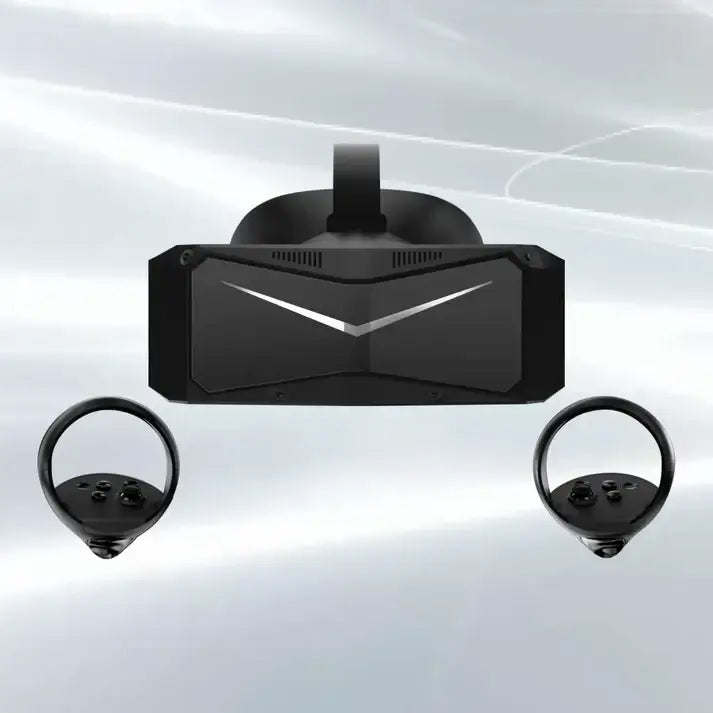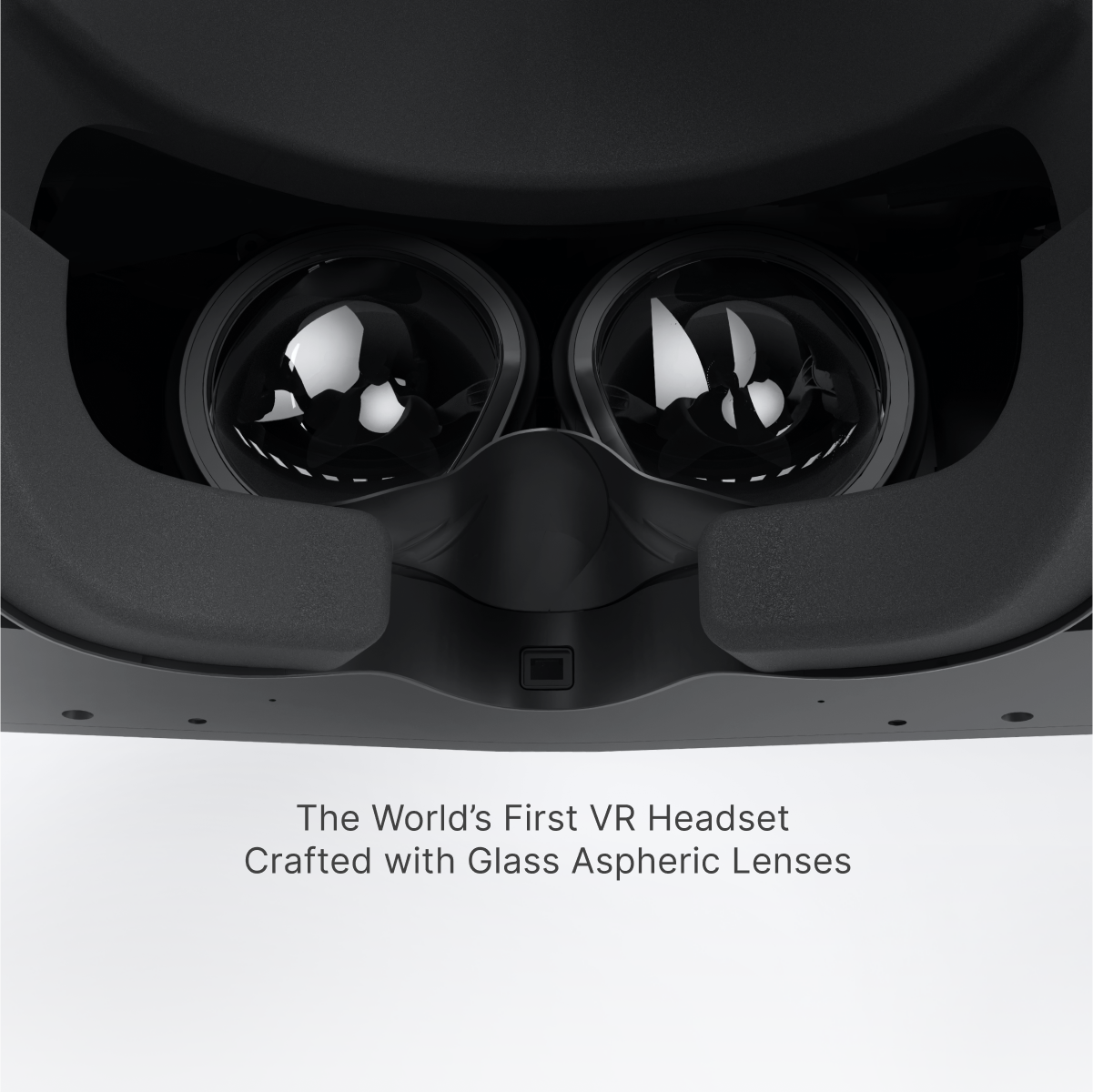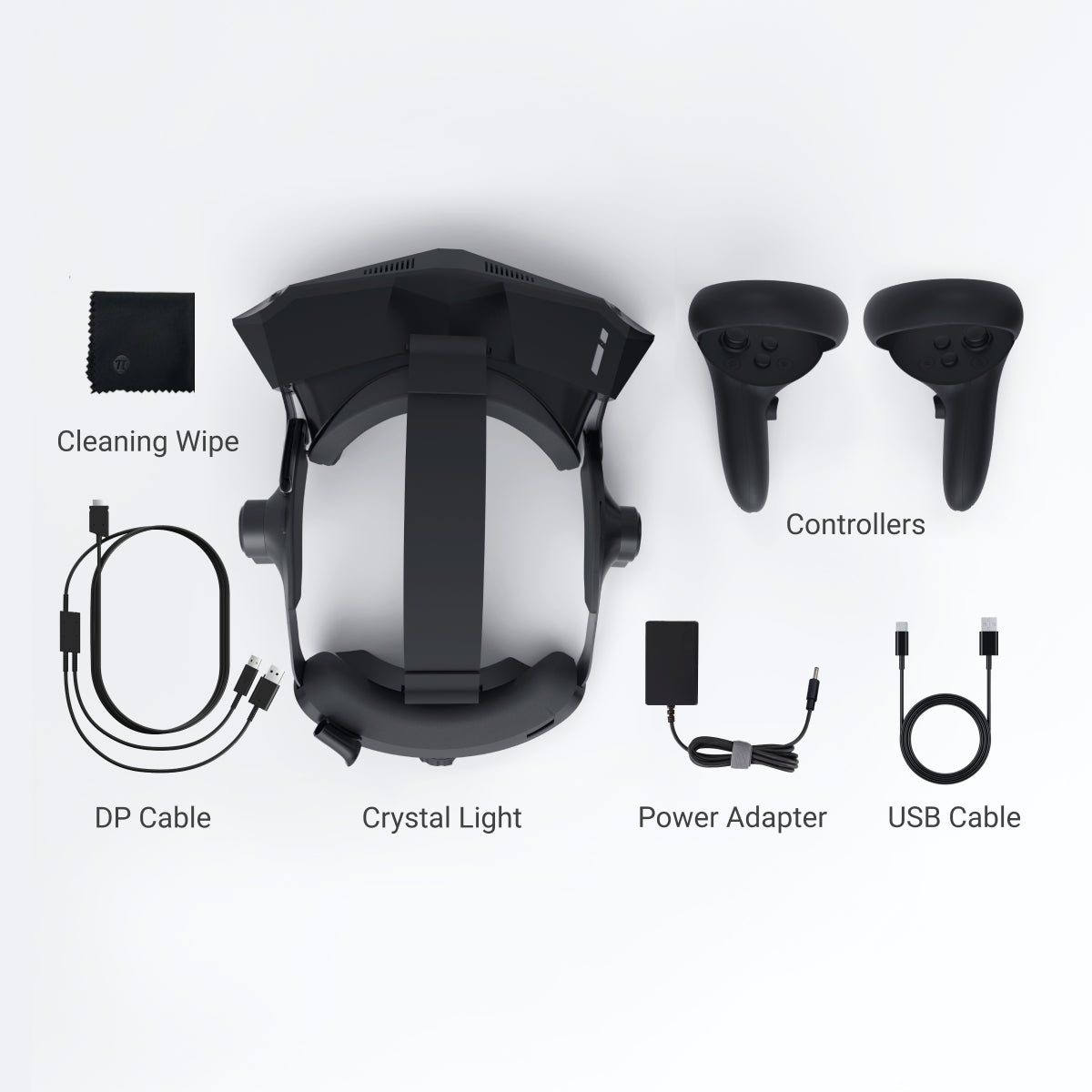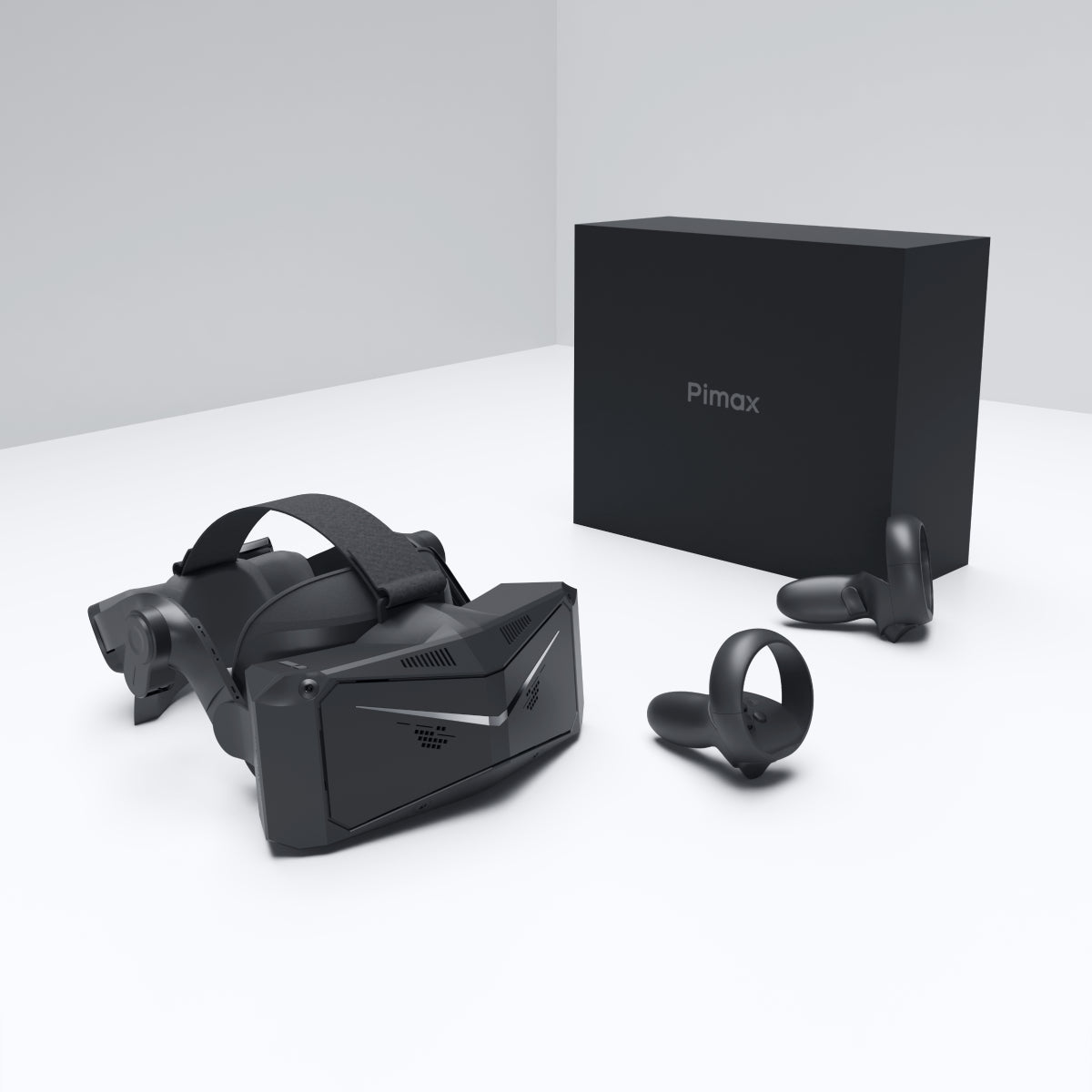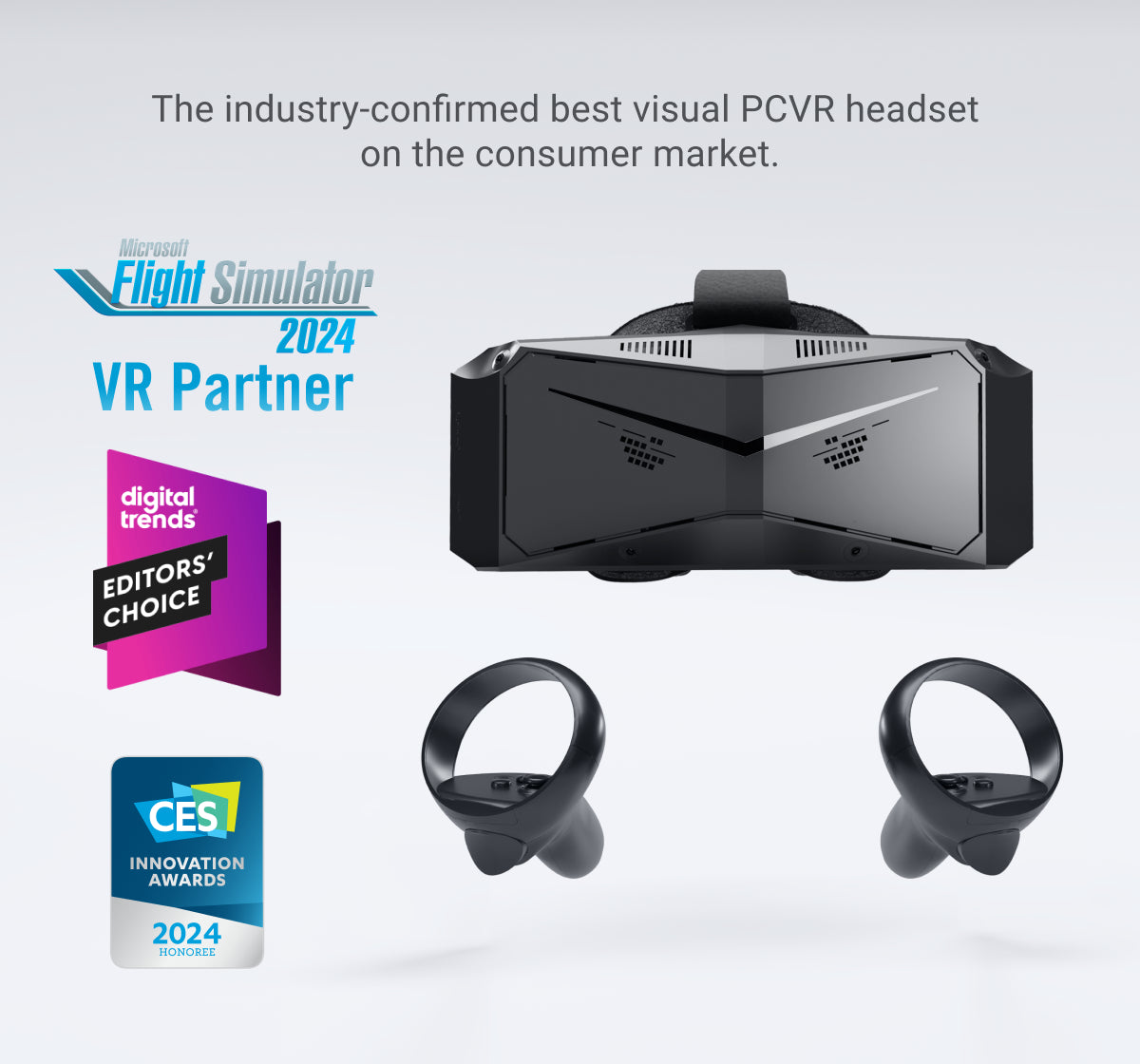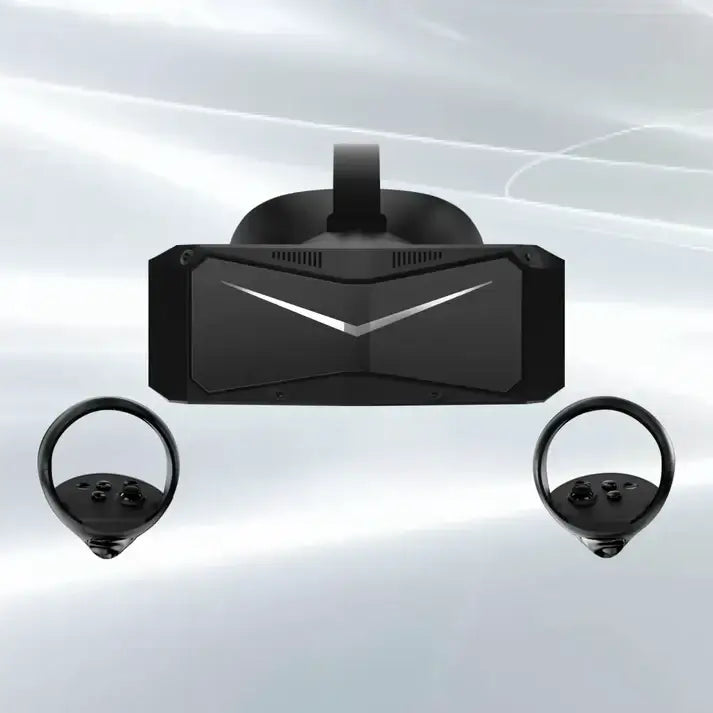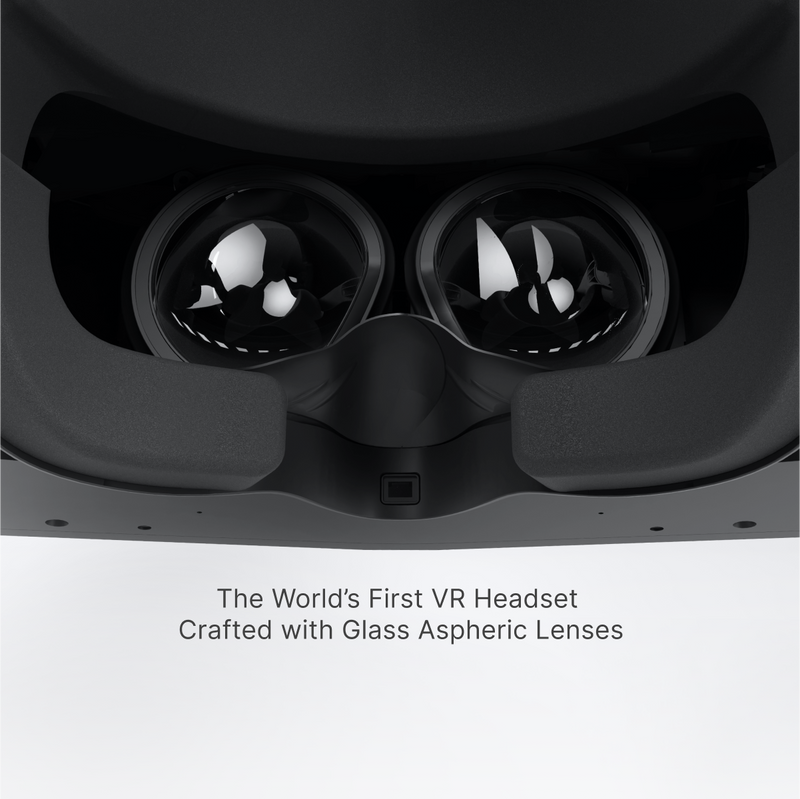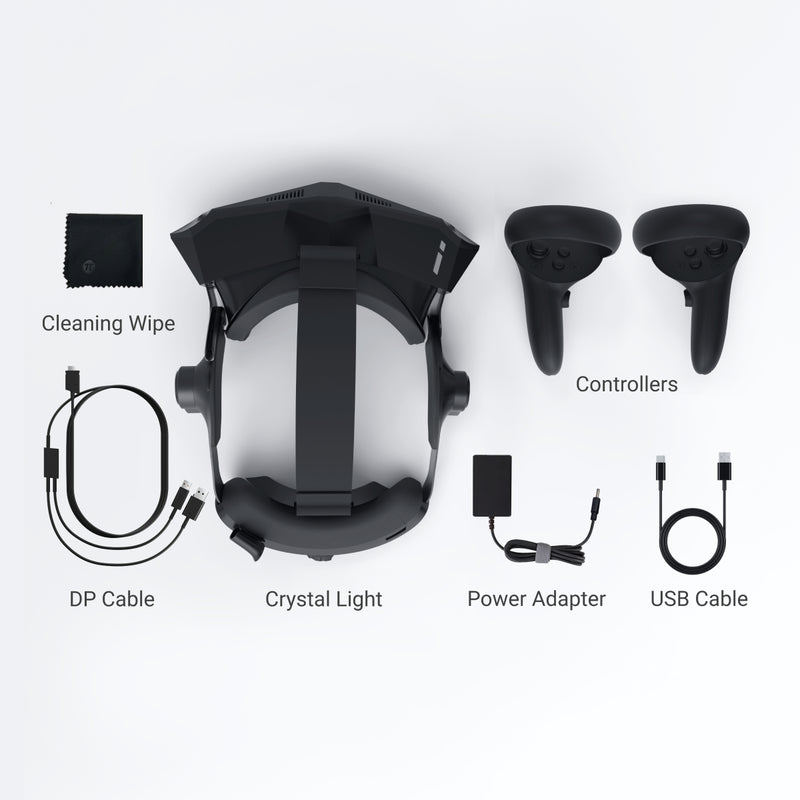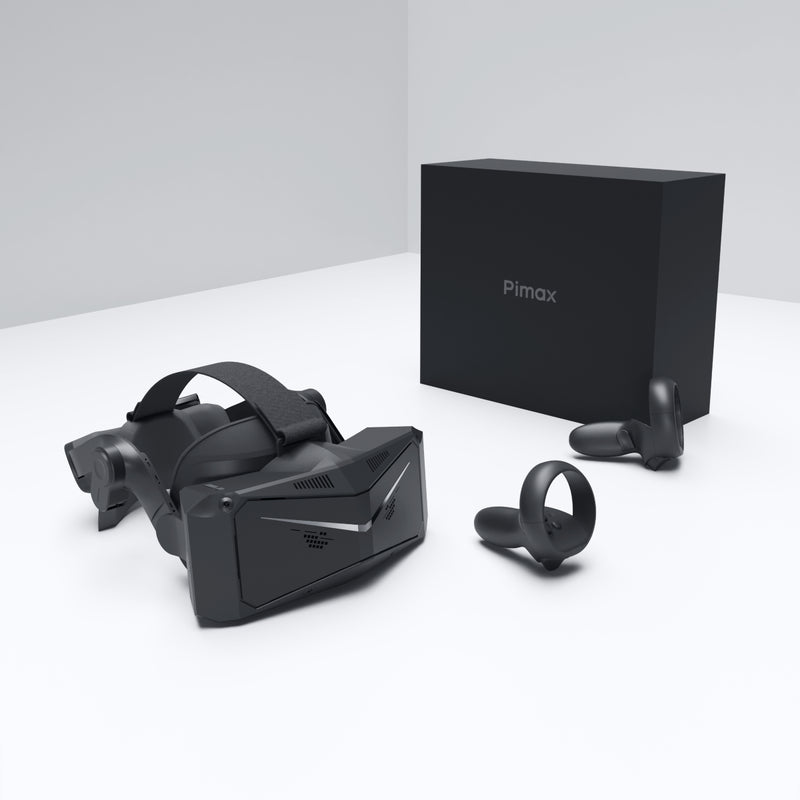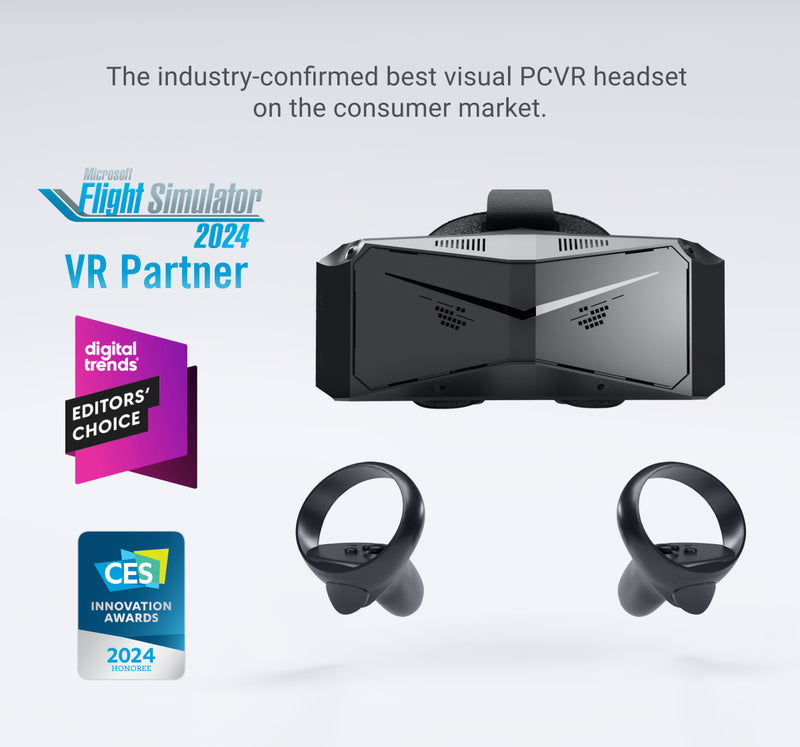Das Pimax Crystal Light VR-Headset ist dank seiner außergewöhnlichen visuellen Leistung und seines optimierten, auf PCVR zugeschnittenen Designs eine überzeugende Wahl für Flugsimulations-Enthusiasten. Dieser Testbericht von Skil von Grim Reapers bietet eine Perspektive aus erster Hand darüber, was das Crystal Light zu einer attraktiven Option für diejenigen macht, die es mit ihren virtuellen Flugerlebnissen ernst meinen.
Hauptmerkmale und Spezifikationen
Das Pimax Crystal Light ist mit der gleichen Bildqualität wie sein Vorgänger, das Original Crystal, ausgestattet und bietet eine Auflösung von 2880 x 2880 pro Auge und asphärische Glaslinsen mit 35 Pixeln pro Grad. Dies sorgt für erstklassige Klarheit und Schärfe der Bilder, die für ein genaues und ermüdungsfreies Ablesen der Cockpitinstrumente entscheidend sind. Anders als das Original Crystal verzichtet das Crystal Light auf den Standalone-Modus und setzt stattdessen auf ein reines PCVR-Setup, das sein Gewicht um beachtliche 310 Gramm reduziert und so den Komfort bei längeren Sitzungen verbessert.
Inside-Out-Tracking ist Standard, sodass keine externen Basisstationen erforderlich sind. Mit zusätzlichem Zubehör ist optionales Lighthouse-Tracking möglich. Das Headset verfügt über eine manuelle IPD-Anpassung über ein einfaches Scrollrad, das einen Bereich von 58 bis 72 mm unterstützt. Allerdings fehlt ihm die automatische IPD-Anpassung des Originalmodells.
Einblicke in die Leistung
Skils Erfahrung mit dem Crystal Light während seiner DCS-Flugsimulationen zeigt, dass das Headset selbst bei anspruchsvollen Einstellungen ein flüssiges und immersives Gameplay ermöglicht. Das Fixed Foveated Rendering schafft ein effektives Gleichgewicht zwischen grafischer Wiedergabetreue und Leistung, indem die Mitte des Displays in einer höheren Auflösung gerendert und gleichzeitig die Belastung der Randbereiche reduziert wird. Diese Technik trägt dazu bei, flüssigere Bildraten zu erzielen, selbst auf Systemen, die nicht der Spitzenklasse entsprechen.
In Sachen Audio liefern die serienmäßigen Down-Firing-Kopfhörer eine angemessene Klangqualität, sind aber den optionalen DMAS-Kopfhörern deutlich unterlegen, die das Hörerlebnis und die Immersion deutlich verbessern. Benutzern, die Crystal Light in Betracht ziehen, wird dringend empfohlen, auf die DMAS-Option umzusteigen.
Benutzererfahrung
Die Einrichtung des Headsets ist unkompliziert: Die Verbindung erfolgt über DisplayPort und USB 3.0, ergänzt durch ein dediziertes Netzteil. Diese Einfachheit spiegelt sich in der Softwareeinrichtung über Pimax Play wider, das Firmware-Updates und die Anpassung der Einstellungen an persönliche Vorlieben vereinfacht.
Obwohl Eye-Tracking-Funktionen fehlen und somit die Verwendung von dynamischem fovealem Rendering nicht möglich ist, gleicht das Headset dies mit einer beeindruckenden visuellen Leistung und robusten Tracking-Funktionen aus, die sowohl für Flugsimulationen im Sitzen als auch für aktivere VR-Erlebnisse geeignet sind.
Für alle, die auf der Suche nach einem erstklassigen Flugsimulator-Headset sind, ist das Pimax Crystal Light zweifellos eine Überlegung wert. Um über die neuesten Erkenntnisse und Bewertungen auf dem Laufenden zu bleiben, abonnieren Sie den YouTube-Kanal von Grim Reapers für weitere Experteninhalte.
Wenn Sie Fragen zur Einrichtung haben, können Sie gerne unserer Discord-Gruppe beitreten. Wir halten regelmäßig Q&A-Sitzungen ab und Sie können Ihre Fragen in den entsprechenden Kanälen posten. Wenden Sie sich bei Discord-bezogener Unterstützung an Max unter Max.Semak@Pimax. Sie können unserer Discord-Gruppe hier beitreten: Discord-Kanal . Für technische Hilfe können Sie sich auch an Emily unter emily.wang@pimax.com wenden oder hier ein Ticket einreichen: Support-Ticket . Weitere Einzelheiten zum Pimax Crystal Light finden Sie hier auf der Produktseite .



